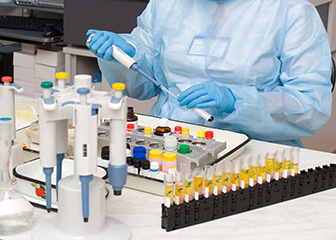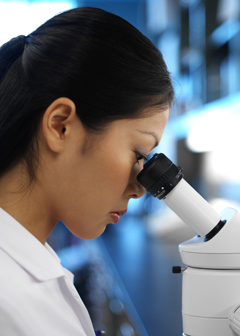How to Become a Medical and Clinical Laboratory Technologist or Technician About this section

Blood bank technologists, or immunohematology technologists, collect, type, and prepare blood and its components for transfusions.
Medical laboratory technologists typically need a bachelor’s degree. Technicians usually need an associate’s degree or a postsecondary certificate. Some states require technologists and technicians to be licensed.
Education
High school students who are interested in pursuing a career in the medical laboratory sciences should take courses in chemistry, biology, and mathematics.
Universities and hospitals offer medical technology programs. An entry-level job for technologists usually requires a bachelor's degree in medical technology or life sciences.
A bachelor’s degree in medical laboratory technology includes courses in chemistry, biology, microbiology, mathematics, and statistics, as well as courses on clinical laboratory skills, management, and education. This degree is sometimes known as a medical laboratory scientist program.
The courses may be offered through a hospital-based program that students attend during their senior year of college. College graduates who major in other sciences and meet a program’s prerequisites, such as having completed required courses in biology and chemistry, may also apply to a medical laboratory science program.
Prospective medical laboratory technicians must complete an associate’s degree program that includes science and clinical laboratory science courses. Often, 1-year certificate programs are available from hospitals for those who already have a degree in a related field, such as nursing. The Armed Forces and vocational or technical schools may also offer certificate programs for medical laboratory technicians. The technician coursework addresses the theoretical and practical aspects of each of the major laboratory disciplines, but the courses are not as in-depth as those that technologists take.
Licenses
Some states require laboratory personnel to be licensed or registered. To be licensed, a technologist often needs a bachelor's degree and must pass an exam. However, requirements vary by state and specialty. For specific requirements, contact your state’s department of health or board of occupational licensing.
Certification
Certification of medical laboratory technologists and technicians is required for licensure in some states and by some individual employers. Although certification is not required to enter the occupation in all cases, employers typically prefer to hire certified technologists and technicians. Medical laboratory technologists and technicians can obtain a general certification as a medical laboratory technologist or technician, or a certification in a specialty, such as phlebotomy or medical biology. Most credentials require that technologists complete an accredited education program to qualify to sit for an examination. Continuing education is required in most cases to maintain certification.
Important Qualities
Compassion. Medical laboratory technologists and technicians need to be empathetic while completing challenging tasks. They work closely with patients who may be in extreme pain or emotional stress and whose cooperation they must be able to get.
Detail oriented. Medical laboratory technologists and technicians must follow exact instructions from physicians in order to perform the correct tests or procedures.
Dexterity. Medical laboratory technologists and technicians require skill while working with their hands. They work closely with needles and precise laboratory instruments and must be able to handle these tools effectively.
Stamina. Medical laboratory technologists and technicians may work on their feet for long periods while collecting samples. They may need to lift or turn disabled patients to collect samples for testing.
Technical skills. Medical laboratory technologists and technicians must understand how to operate complex machinery.








